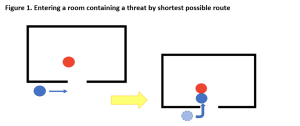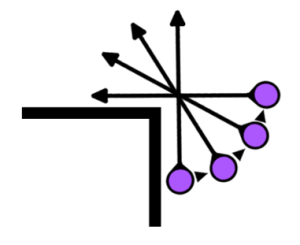Military room clearance drills for Paramedics
The statistics on paramedic assault rates tell us that it’s a war zone out there on the job! One recent study looking at assault rates on a cohort of 1778 Emergency Services Workers revealed 633 reported being assaulted in the previous 12 months, with 203 of those believing that the incident could have been prevented (Maguire, 2018). The study then went on to explore techniques that might have potentially prevented those assaults, one of which being:
Situational Awareness
It has further been suggested that the operational and environmental similarities existing between paramedics and other emergency service workers such as police and firefighters, create an opportunity to share occupational violence mitigation strategies and experiences (Drew, 2021).
One technique to improve situational awareness that is used to great effect in policing and military is the concept of “Pieing” doorways before entering them. Let’s look at what that means.

Just like cutting up a pie into slices, the process of pieing involves taking a wide berth around a doorway and looking through the doorway to view “slices” of whatever is on the other side before making entry. This improves situational awareness and reduces the chances of encountering an unexpected threat immediately upon entry. If a threat is identified when pieing, the paramedic can choose to back off and reconsider entry.
Generally, when we’re getting around the place, and particularly when we’re in a rush such as responding to a medical emergency, we have the tendency to take the shortest possible route to get where we need to go. When it comes to entering a room, that usually means simply turning the corner and walking on in! While this is appropriate in low threat environments, it can lead to potential disaster in first responder roles, as illustrated in Figure 1.

It’s easy to get caught up in the moment when on the job, but as can be seen in Figure 1, by trying to be as efficient as possible to get to a patient, a paramedic might find themselves face-to-face with a threat and have little time to react before potentially being assaulted.
Let’s have a look at the same scene with the paramedic pieing the doorway.
Figure 2. Pieing the doorway of a room containing a threat

By taking a wide berth and moving past the doorway, the paramedic can visually cut the room into slices and gain better situational awareness of what is in the room before entry. In this instance they would have seen the potential threat in the room and been at a safe distance to create time to consider the best option to proceed without immediate threat of assault.
Pieing can also be used when going around corners as seen in Figure 3.
Figure 3. Slicing the pie around a corner

Guardian Personal Safety training was founded by paramedics and exists for the sole purpose of training those at occupations at risk of assault in strategies to minimise that risk. These strategies include situational awareness techniques, recognition of threat and escalation, de-escalation and disengagement techniques, and also practical physical self-defence techniques for the worst-case scenario.
For further tips and techniques to ensure you get home safely from your shift, check out Guardian’s
online Personal Safety Training for Paramedics course
Or for further information on in-person or virtual courses, please touch base using the following email address:
References
Drew, P. T. V. D. S., 2021. Paramedic occupational violence mitigation: a comprehensive systematic review of emergency service worker prevention strategies and experiences for use in prehospital care. Occupational and Environmental Medicine, 78(11), pp. 841-848.
Maguire, B. O. B. O. P. B. M. D. M., 2018. Preventing EMS workplace violence: A mixed-methods analysis of insights from assaulted medics. Injury, 49(7), pp. 1258-1265.